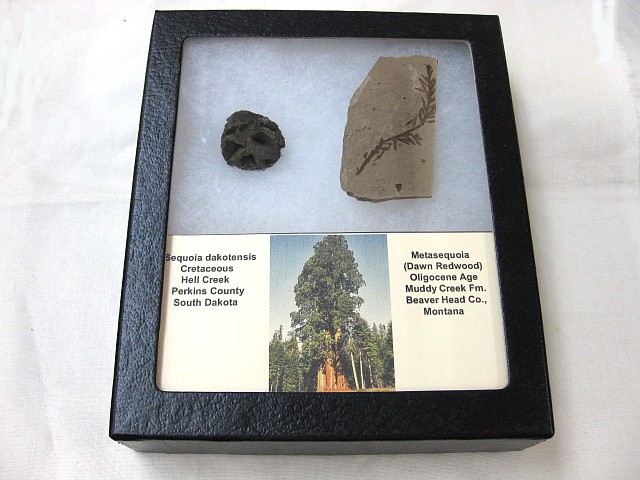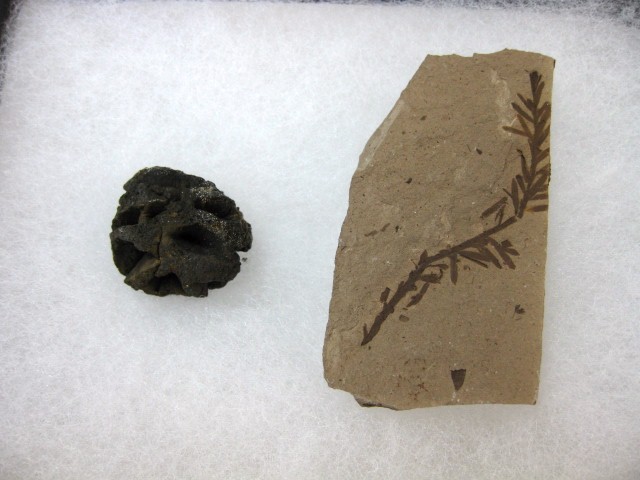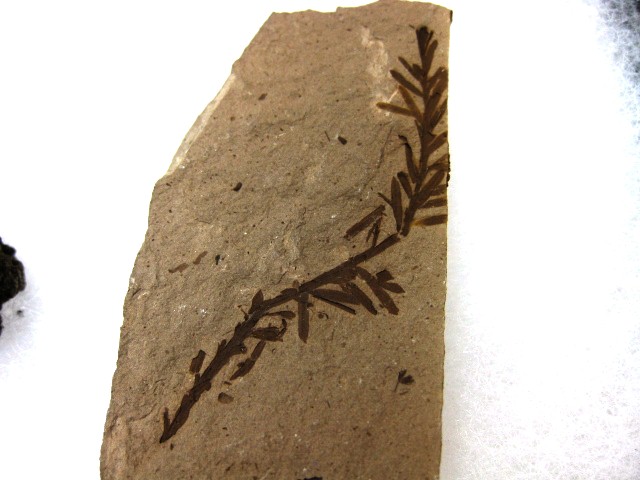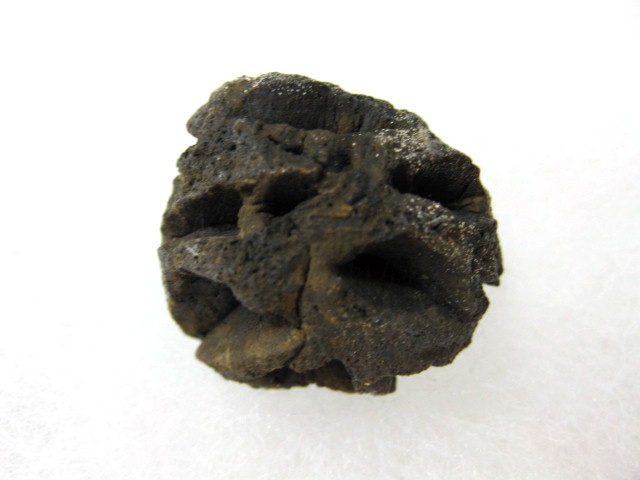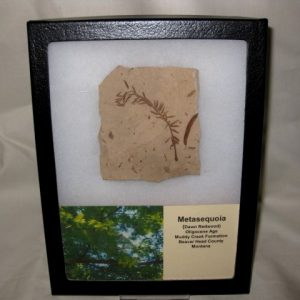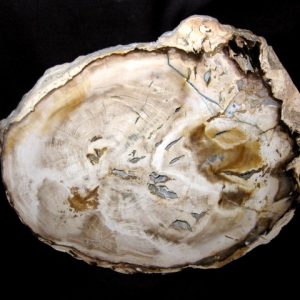Description
- Metasequoia (Dawn Redwood) & Sequoia dakotensis Cone
- Oligocene Age & Cretaceous Age
- Muddy Creek Formation & Hell Creek Formation
- Beaver Head County, Montana & Perkins County South Dakota
- Specimen will come in the 5.25″ x 6.25″ Riker with label as shown
The Dawn Redwood (Metasequoia) is a genus that dates all the way back to the age of dinosaurs… it is related to the California Redwoods and was thought to be extinct until living specimens were discovered in central China in 1944. First called a “fossil tree” because it was believed extinct, this fast growing tree is now a favorite ornamental tree. It was (and is) a deciduous conifer. Today’s Metasequoia has a full pyramidal shape, grows to 120′ high.
The genus Sequoia first appears in the fossil record as Sequoia jeholensis, found in Jurassic deposits of South Manchuria. By the late Cretaceous it was already established in Europe, parts of China, and western North America. Comparisons among fossils and modern organisms suggest that by this period Sequoia had already evolved a greater tracheid diameter that allowed it to reach the great heights characteristic of the modern Sequoia sempervirens (coast redwood).
Sequoia was not dominant in the tropical high northern latitudes, like Metasequoia, a redwood whose deciduous habit gave it a significant adaptive advantage in an environment with 3 months of continuous darkness. However, there still was prolonged range overlap between Sequoia and Metasequoia which could have led to hybridization events that created the modern hexaploid Sequoia sempervirens.

